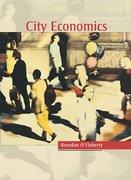2. Noisy City is thinking about regulating cell phones. People have complained about the nuisance and danger
Question:
2. Noisy City is thinking about regulating cell phones. People have complained about the nuisance and danger caused by other people talking on cell phones. You have been asked to prepare a recommendation that minimizes the expected value of social loss.
The private marginal cost of cell phone calls is constant at one. The social
(external) marginal cost of a cell phone call is q, where q is the number of calls being made.
Because it’s a relatively new technology, you are unsure of the demand
(i.e., marginal benefit) of cell phone calls. You know that the (inverse) demand curve is D(q) = 1 + A − q/10, but you don’t know what the value of A is. There is a 50 percent probability that A = 14, and a 50 percent probability that A = 8.
a. Find the optimal number of phone calls as a function of A. (That is, if you knew A, what would be the optimal number of phone calls?)
b. In general, if you ended up with q phone calls being made instead of the optimal number, q being greater than the optimal number, what would the social loss be as a function of A and Q?
c. Suppose you regulate the quantity of phone calls by fixing a number of permitted calls R. If A = 8, what’s the deadweight loss (as a function of R)? If A = 14, what’s the social loss (as a function of R)? What’s the expected social loss (as a function of R)?What value of R minimizes the expected value of social loss? What rule should you make? If you make the best possible rule, what is the expected value of social loss?
d. Suppose, instead, that you set a tax on cell phone calls. Set the tax rate at t. Given A and t, how many calls will be made? If A = 8, what’s the social loss (as a function of t)? If A = 14, what’s the social loss (as a function of t)? What’s the expected value of social loss (as a function of t)? What tax rate should you set? If you set the best possible tax rate, what’s the expected value of social loss?
e. Should you use a quantity rule or taxes to regulate cell phones?
f. How would your answer change if the (inverse) demand curve were D(q) = 1 + A − 10q, instead?
Step by Step Answer:







